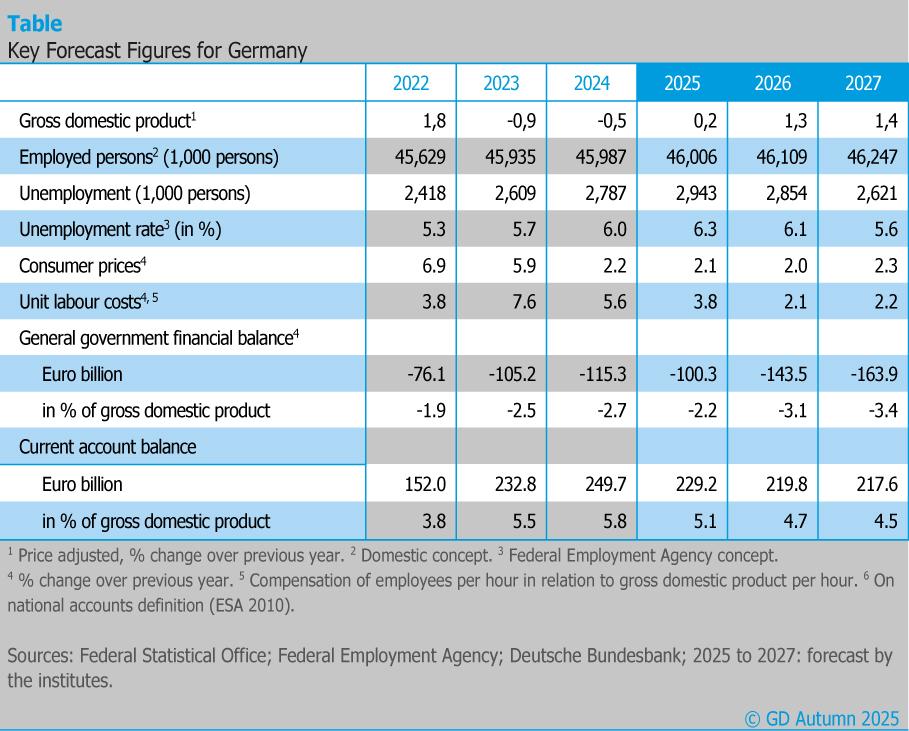Joint Forecast: Fiscal Push Lifts German Economy, But Structural Strains Persist
Germany’s leading economic institutes expect the country to return to growth after a weak start to 2025, though they caution that structural weaknesses continue to weigh heavily on long-term prospects.
According to the Joint Economic Forecast released this week, gross domestic product is expected to expand by just 0.2 percent in 2025, following stagnation in the first half of the year. Growth is projected to accelerate to 1.3 percent in 2026 and 1.4 percent in 2027, largely due to government stimulus measures. The estimates are broadly unchanged from the spring forecast.
The forecast is prepared twice a year by a consortium of institutions, including the ifo Institute in Munich, the German Institute for Economic Research (DIW Berlin), the Kiel Institute for the World Economy, the Halle Institute for Economic Research (IWH), and RWI Essen, working with Austria’s WIFO and the Institute for Advanced Studies in Vienna.
The government’s looser borrowing rules have created room for higher spending on defense, infrastructure and climate-related investments. Analysts note that these measures will support demand, though the effect will be limited by slow disbursement of funds and lengthy planning processes. The institutes also warn that some of the new borrowing simply postpones fiscal consolidation, creating a sizeable adjustment need by 2027.
Despite the near-term boost, the report highlights persistent structural challenges. High energy costs, rising labor expenses, shortages of skilled workers, and weakening international competitiveness continue to erode Germany’s growth potential. Export demand is expected to remain subdued, reflecting both higher trade barriers and waning foreign appetite for German goods.
As a result, the recovery is projected to be driven mainly by domestic demand. Public services and consumer-oriented sectors should expand, supported by rising employment and real disposable incomes. Inflation is forecast to hover slightly above two percent over the period. Manufacturing, by contrast, is only expected to see modest gains.
Risks to the outlook remain considerable. The institutes point to the ongoing trade dispute between the European Union and the United States as a key source of uncertainty. They also stress that the eventual impact of expansionary fiscal policy depends on how effectively funds are channelled into projects.
The consortium concludes that Germany is at a turning point. While fiscal policy can lift output in the short run, the lack of structural reforms leaves the country vulnerable to slower potential growth in the longer term. The report calls for a coordinated reform agenda to strengthen competitiveness, improve labor market conditions, and restore confidence in the country’s economic model.
Source: DIW Berlin









